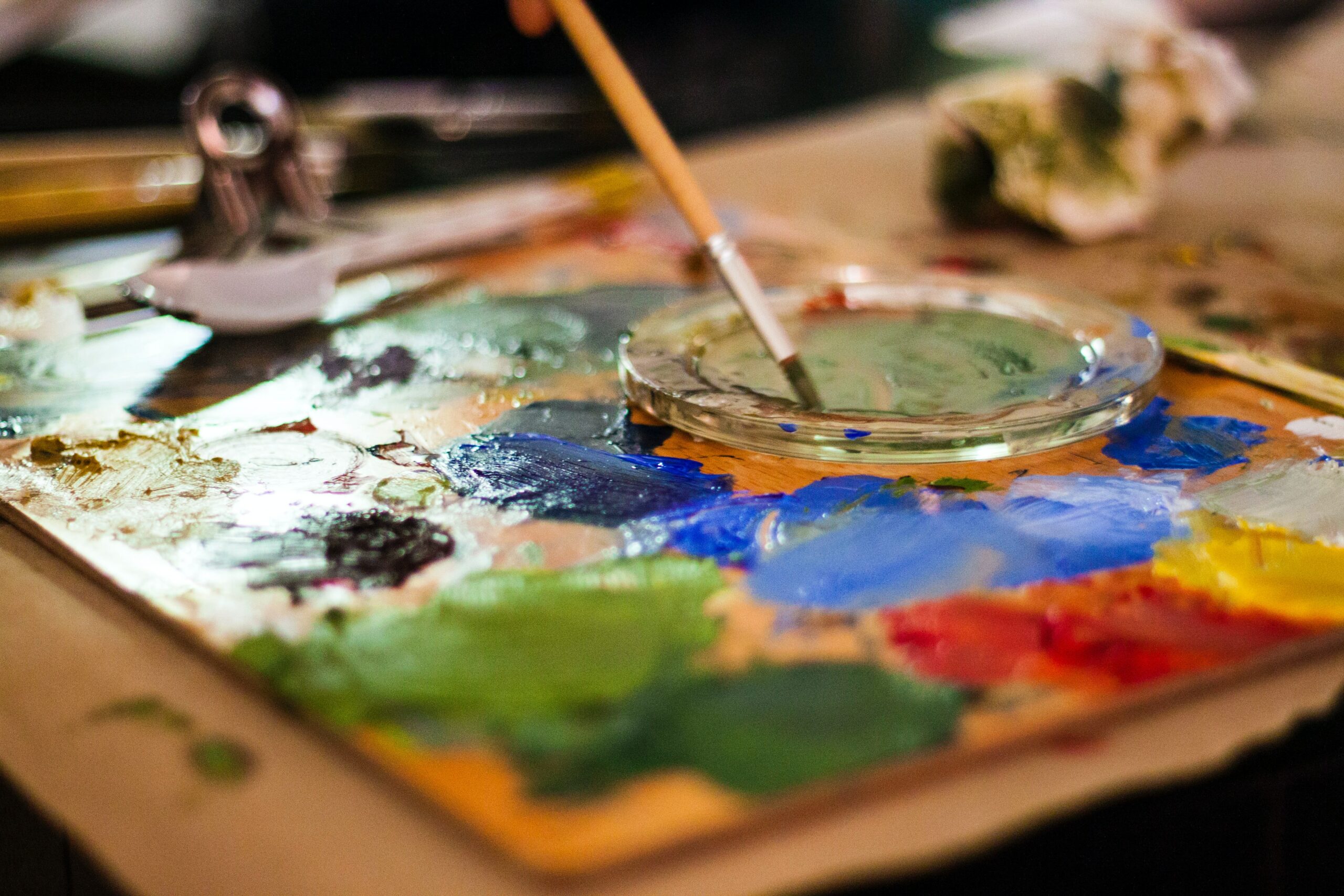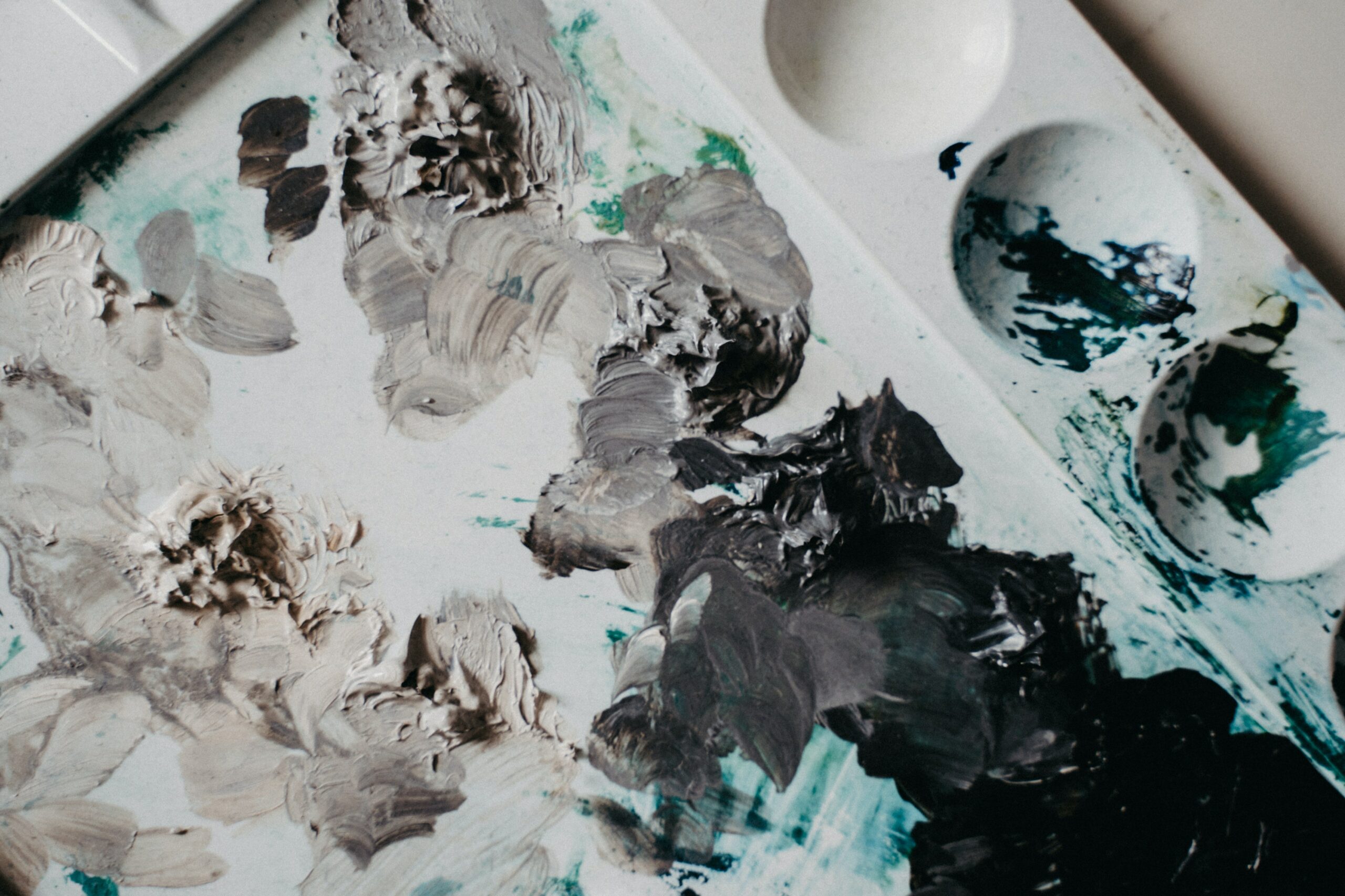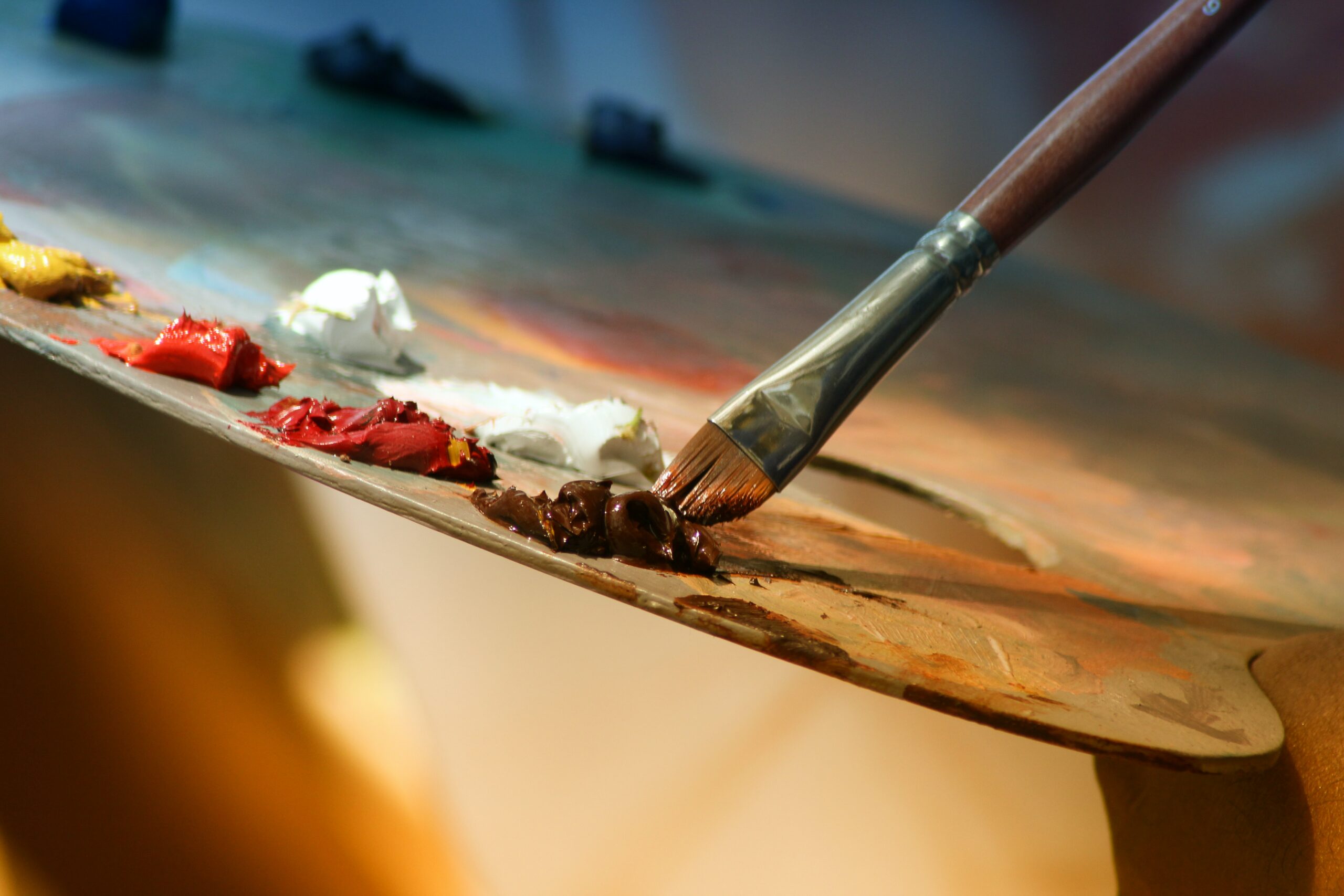The Ultimate Guide to Keeping Your Acrylic Paint Palette Spotless
Are you a serious acrylic painter who knows the importance of keeping your paint palette clean? If so, then this article is for you! Cleaning an acrylic paint palette isn't something to be taken lightly - it’s essential if you want to maintain good painting results and keep your colors looking their best. As an experienced artist and cleaning expert, I'm here to help guide you through the process of giving your palette a thorough clean.
In this article, we'll cover all aspects of cleaning an acrylic paint palette - from materials needed, and steps involved right through to tips on how to prevent buildup in the future. We'll also discuss any potential hazards that might arise when attempting this task. So if you're ready to get started, let's dive straight into the world of acrylic paint palettes!
Cleaning an acrylic paint palette can seem intimidating at first but don't worry – as long as you have the right tools and supplies, it doesn't need to be complicated or time-consuming. Plus with my easy-to-follow instructions, anyone can master the art of proper cleaning in no time! Are you ready? Let's begin!
Tools Needed
When it comes to cleaning your acrylic paint palette, the right tools are key. To get started you'll need a few items: a reliable paintbrush cleaner, a sturdy paint scraper, a soft cloth, and some soap solution. A scrub brush will also be handy in case of stubborn build-up. Gather these supplies so that you can begin prepping for the big cleanup! Make sure to dispose of any chipped or loose paint chips before starting - this is an important step if you want your acrylics to look their best afterward. With all the necessary tools at hand, we're ready to start tackling our project.

Pre-Cleaning Preparation
Now that we've gathered the necessary tools, it's time to get ready for pre-cleaning! First off, you'll want to make sure you're wearing protective gear. This will help protect your skin from any harsh chemicals and paint residue. Next, have all of your cleaning supplies on hand so they’re easily accessible when needed. Now grab your paint palette and get ready to remove as much of the paint as possible before beginning the cleaning process.
Using a dry cloth or paper towel, start wiping away the excess paint until most of it is gone. You may need to use some cotton swabs dipped in acetone or rubbing alcohol if there are more stubborn spots that won't come off with just a cloth.
Be extra careful not to press too hard against the surface of the acrylic while using cotton swabs - it can cause scratches. Once you feel like you've removed enough of the dried-up paint, you're ready to move on to cleaning your paint palette properly.
Cleaning Process
Cleaning an acrylic paint palette can be a tricky process, but with the right supplies and technique, it's easily manageable. The most important part of this cleaning process is to prepare your materials beforehand. You'll need some kind of scrubbing brush or sponge, along with a few different types of cleaning solutions that are safe to use on your palette.
Once you have everything ready, start by removing as much paint from the palette as possible using either a dry cloth or a paper towel. This will help make sure that any remaining paint doesn't get mixed in with the cleaning solution later. Afterward, wet the scrubbing brush and apply your chosen cleaning solution onto the surface of the palette, then start gently scrubbing away at any stubborn stains or dried chunks of paint still left behind. Work in small sections until all areas have been cleaned properly.
For more difficult cases where regular soap and water aren’t enough, there are special products designed specifically for paint removal available online and in stores. These usually contain stronger ingredients that can help break down tough residue without damaging your palette’s finish. Just remember to always wear gloves when handling these kinds of chemicals! With careful use and proper post-cleaning maintenance, you should have no problem keeping your acrylic paint palette looking like new for years to come.

Post-Cleaning Maintenance
Once your acrylic paint palette is squeaky clean, it's time to protect it from future wear and tear! Your cleaning efforts will be wasted if you don't take the necessary steps to maintain its pristine condition. To keep your palette in perfect shape for years to come, here are a few key tips:
First and foremost, proper storage is essential when caring for any painting surface. Investing in a hard-shell case or canvas wrap can certainly help preserve your palette while also keeping it safe from potential harm. Additionally, keep an eye on the shelf-life of your paints—as they age, their pigments may start to separate and degrade over time. Regularly replacing old colors with fresh ones can make all the difference.
Regular checkups should be part of your routine! Taking a moment now and then to look at how well your paints are adhering to each other, as well as inspecting for any cracks or chips that may have formed along the edges of the palette can help ensure optimal performance for years to come.
With these simple care tips, you'll be able to enjoy working with your beautiful acrylic paint palette without worry! Letting go of any lingering anxiety around protecting it paves the way for disposal.
Disposal Of Paint Palette
Once your paint palette is clean, it's time to consider disposal. We can all agree that proper disposal of a paint palette is important for our environment and safety considerations. Here are some tips on how to discard your palette:
- Recycle – If you have an old metal or plastic palette, you can take it to a local recycling facility for proper disposal.
- Reuse – If the condition of your palette allows, donate it to an artist in need or put it up for sale online.
- Repurpose – There are many ways you could use your old paint palettes around the house such as planter boxes or jewelry holders!
- Trash– As a last resort, make sure you properly wrap the palette with newspaper and throw it away in the trash bin.
No matter which one of these options you choose, be sure to follow any instructions provided by your city’s waste management system. With these steps completed, we can safely move on to considering safety considerations when handling acrylic paints.

Safety Considerations
When cleaning an acrylic paint palette, there are some important safety considerations to keep in mind. Firstly, it is essential to wear a respirator mask, protective gloves, and eye protection while doing the job. This will protect the user from any hazardous fumes or splashes that may occur during the process. Secondly, be sure to work in a well-ventilated area with a good ventilation system. It's also important to keep your painting area free of flammable objects and materials.
It’s critical to remember that breathing in too much solvent could cause serious health problems like respiratory irritation and headaches. Additionally, make sure not to use any abrasive cleaners on the palette as this can damage the surface of the plastic material used for making the palette. Instead, opt for mild detergents or water-soluble solvents when necessary.
To ensure maximum cleanliness and safety when using an acrylic paint palette, always take these precautions into account before beginning any cleaning process. Taking care of yourself and your environment will help you get through this task with ease!
Frequently Asked Questions
Removing dried acrylic paint from your palette can be a tricky process; however, with the right techniques and materials it doesn’t have to be difficult. It is important to note that removing dried acrylic paint should always come before cleaning an acrylic paint palette. Cleaning first could result in further damage or discoloration of the palette surface. Here are some tips for successfully removing dried acrylic paint from your palette.
The first step in removing dried acrylic paint is to scrape away as much of the excess paint as possible using either a plastic scraping tool or a credit card edge – whichever you find works best for you. Once most of the excess has been removed, use a damp cloth dipped in warm water and mild soap (if needed) to wipe down any remaining areas of residue on the surface of your palette. If there are still stubborn spots, use a slightly more abrasive material such as steel wool or sandpaper to help remove them thoroughly. Make sure not to apply too much pressure when scouring as this could cause damage to the palette’s surface over time.
After all traces of dried acrylic paint have been removed from your palette, it is essential that you properly store it between uses so that future cleanings remain easy and efficient. To do this, make sure that any leftover paints are wiped off with paper towels and stored separately in airtight containers until they’re ready to be used again. Additionally, if storing multiple palettes together, wrap each one individually in cling film or plastic bags so they don’t get mixed up with other colors while drying out overnight. Following these steps will ensure that cleaning and removing dried acrylic paint from your palettes remains quick and hassle-free every time!
When it comes to acrylic paint palettes, cleaning frequency is a key factor in maintaining quality. Knowing how often one should clean their palette can make all the difference between professional-looking artwork and an amateurish mess. As someone who has spent years perfecting my techniques for cleaning acrylic paint palettes, I’m here to tell you that proper cleaning frequency will help your artwork reach its full potential.
To begin with, it’s important to understand what kind of debris accumulates on the palette when using acrylic paints. From tiny flecks of dried pigment to larger chunks of hardened paint, many different things need to be removed from the palette after each use. If not properly cleaned off, these particles can mix with new colors and cause undesired color shifts and muddiness in future paintings. Therefore, ensuring that all traces of old paint are wiped away before applying fresh colors is essential for creating consistent results every time.
So just how often should one clean their acrylic paint palette? Generally speaking, professionals recommend wiping down the surface at least once during painting sessions as well as at the end of each session. This ensures that no previous pigments or other contaminants have been left behind on the palette’s surface which could affect your next painting project negatively. Additionally, if you happen to leave a loaded palette sitting out overnight then it would also be wise to give it another wipe-down first thing in the morning before beginning any work. Ultimately, keeping up a regular schedule of thorough cleaning is paramount when working with acrylic paints – both for convenience’s sake and artistic quality control!
By understanding why frequent cleaning is necessary and implementing specific maintenance habits into your workflow accordingly, you’ll be able to ensure that your creative endeavors turn out looking sharp and vibrant every time! So don’t hesitate: grab some solvent cleaner and get those brushes scrubbing so your artworks shine like never before!
Have you ever wondered if it is possible to clean an acrylic paint palette with soap and water? As an acrylic paint palette cleaning expert, I can tell you the answer is a resounding yes! With just a few simple steps, your paint palette will be sparkling clean.
Firstly, gather all of the supplies needed to properly clean your acrylic paint palette: soap and water, a cloth or sponge, and optionally some white vinegar or an acrylic paint cleaner. Start by wetting the cloth or sponge in warm soapy water; then use it to gently scrub away any dried-on bits of paint from the surface. To get rid of stubborn clumps of old pigment, apply a small amount of white vinegar directly onto them before wiping them off with a damp cloth. If needed for extra tough spots, try using an acrylic paint cleaner specifically designed for this purpose.
Once all traces of dried-up paint have been removed from the surface, take your towel or sponge and rinse out any remaining dirt or debris that may remain. Afterward, dry off the entire area thoroughly with another cloth until no excess moisture remains-it’s important not to leave behind any standing pools of liquid as they could ruin your paints later on! Finally, store your freshly cleaned palette somewhere safe and allow it to air dry completely before reusing it again.
Cleaning an acrylic paint palette doesn’t have to be complicated or time consuming-with minimal effort, you’re sure to get excellent results every single time! So don’t hesitate-try out this easy process today and see just how much better your workspaces look afterward!
If you’re wondering if it’s safe to use a dishwasher to clean your acrylic paint palette, I’m here to tell you that the answer is yes. It may sound too good to be true but with the right steps and precautions taken, putting your paint palette in the dishwasher can save you time, energy, and effort without risking any damage or harm.
To start on the right foot, let me lay out some essential tips for using a dishwasher safely when cleaning an acrylic paint palette. Before placing your palette into the machine, make sure all of your excess dried-up acrylic paint has been scraped off as thoroughly as possible. Then give it one final rinse in warm water before loading it into the dishwasher. This will ensure no particles get caught in crevices and clog up appliances like pipes or motors during operation; plus this way you won’t end up with shiny spots caused by soap residue drying onto painted surfaces!
Once everything is ready to go, select a cycle specifically designed for delicate items (such as china plates) and dial down times accordingly so that nothing gets overheated or damaged. Additionally, avoid adding detergent if possible because these chemicals can strip away vibrant colors over time. Lastly, always check afterward whether there are still traces of dirt left behind- If so simply brush them away with a soft cloth or toothbrush before they have time to set back into place!
With these simple steps followed properly every single time, you can feel confident knowing that your acrylic paint palette is being cleaned effectively while remaining safe from potential damages brought on by the misuse of a dishwasher. So don’t let yourself fall victim to old wives’ tales – take control of your painting tools today!
Storing your acrylic paint palette between uses may seem like a minor task, but it can be tricky to get right. An improperly stored palette can lead to ruined paints and a clumped-up mess that’s difficult to clean up. To prevent this from happening, here are some tips for safely storing an acrylic painting palette:
- Clean the surface of the palette before putting it away. This will help keep any remaining paint moist and avoid drying out while in storage.
- Store the palette on a flat, dry surface with enough airflow around it so that moisture doesn’t accumulate inside the compartment.
- Wrap the palette in plastic wrap or place it in an airtight container before storing it away to keep dust and other particles away.
- Put desiccant packets in the same space as your palette to absorb excess moisture and protect against mold growth.
As an acrylic painting expert, I recommend taking extra care when storing your acrylic paint palettes as they can easily be damaged by improper handling or exposure to extreme temperatures and humidity levels. Think about where you store them carefully – not too close to windows or vents which could cause condensation buildup – and ensure that all surfaces are completely cleaned off before packing them away for long periods. Taking these steps will help preserve your precious art supplies from unnecessary damage or deterioration over time!
Conclusion
Welcome to the acrylic painting world! As an expert in cleaning, I’d like to offer some advice on how to care for your palette.
You must clean your palette after each use. This will help keep it free of dried paint and make sure all colors stay vibrant when you need them. You can simply wipe down with a damp cloth or paper towel, although soap and water are also effective. If there is any stubborn dried paint residue left behind, try using a brush or toothpick to gently scrape it away.
When storing your palette between uses, be sure to cover it with plastic wrap or place it inside a sealed container which will prevent air from drying out the colors. Additionally, avoid washing your palette in the dishwasher as this could damage its surface over time.
Cleaning an acrylic paint palette doesn't have to be too difficult if you follow these simple tips. With just a little bit of effort and regular maintenance, you'll ensure that your colors last longer and look great every time you pick up your brushes!






